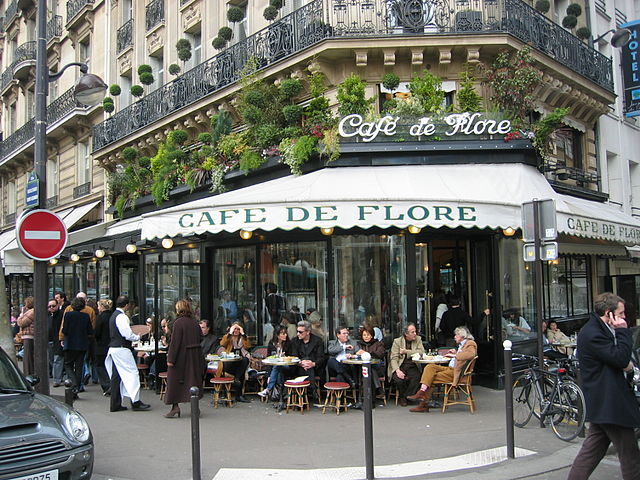
Why were coffeehouses important? Early coffee houses were important because they were a center for social interaction and the sharing of knowledge. It can be speculated that were it not for coffeehouses, several revolutions would not have happened, and the world would be much different to the way it is today.
Coffee was discovered on the Ethiopian plateau. Legend has it that a goat herder saw the way his goats reacted after they had eaten coffee beans, and he reported his discovery to the abbot of the local monastery. The abbot made a drink from the berries, hoping that it would keep the monks alert and awake through their evening prayers. Coffee slowly spread out of Ethiopia and headed throughout the Arabian Peninsula. Coffee was drunk in Arabia, Persia, Egypt, Syria, and Turkey. And this is where the first coffeehouses appeared. Coffeehouses served two purposes. The first was a place to socialize. The Muslims in the Ottoman Empire were not allowed to drink, so they could not go to pubs or taverns. Coffeehouses gave them a place to sit and socialize without drinking alcohol. The second was it gave them a way to hear about the news and current events. There were no newspapers and the only way to get the news was to hear about it. Anyone who came to town with news would stop at a coffeehouse to pass the news on. Coffeehouses spread all over the Arabian Peninsula. There was even one at Mecca. The coffeehouses provided such a great place for people to talk about news and society that the Ottoman sultan felt threatened and banned them all.
Coffee started to travel up into Europe. People that visited the Arabian peninsula would take back stories of the black drink that enabled people to stay up talking for hours. These Europeans started to take the beans back with them. As with most African and Arabian things that arrived in Europe, coffee made its way up through Venice. The Port of Venice was a major trading point with Africa and the Middle East. Venetian merchants started to sell coffee and the drink became popular. The first coffeehouse outside of the Ottoman Empire was opened in 1632 in Venice. It didn’t take long for the culture of coffee drinking and of coffeehouses to spread across the rest of Europe. There were coffeehouses in Austria, Prussia, France, Portugal, and many other European countries. They reached England in 1650, and by 1750, there were 3,000 coffeehouses across England. They spread across to America as well, growing in popularity after tea was taxed and then thrown into the sea at the Boston Tea Party.
So, why were coffeehouses important? They served several important functions. The first was as a gathering place. In England, customers would pay one penny to be admitted to the coffeehouse. That one penny would buy a cup of coffee and access to all of the newspapers and books the coffeehouse had. A penny wasn’t a huge amount of money. A haircut cost about 6 pennies. Once inside, the coffeehouse provided something else that was fairly unique. Anybody that could afford the penny could get in, which meant that classes would be mixed up. Society was very formal, and the classes never mixed, except inside coffeehouses.
The availability of news and the mix of classes and employment of the clientele of the coffeehouses led to another of their important functions. They were an excellent place to discuss ideas and to spread knowledge. In fact, they were so useful for the furthering of knowledge that the early coffeehouses that sprang up in Oxford were called Penny Universities because people could get access to university information and teaching by just paying one penny for the coffeehouse. They also had an advantage over regular taverns because the people in the coffeehouses were not drunk and could have coherent conversations. Writers, poets, philosophers, scientists, professors, and a whole host of other people would meet there to discuss ideas.
Coffeehouses were news centers and centers of learning, but they were also centers of dissent as well. They were excellent places for people to gather and ideas could be incubated. It is said that the American Revolution and the French Revolution were conceived in coffeehouses. That is likely because there were not many other places where people could meet and talk freely. However, that doesn’t mean that coffeehouses were hotbeds of revolution. People who were for or against a certain idea would gravitate to a coffeehouse where like-minded individuals would meet. In the same way, people who were against an idea would gravitate to places where those like-minded individuals would meet. And some of the coffeehouses might have had a mix of opinions. They were very much the SNS of the day, with all of the confirmation bias that we get today as well. And this is what I learned today.
If you liked this, try these:
Sources
https://en.wikipedia.org/wiki/English_coffeehouses_in_the_17th_and_18th_centuries
https://en.wikipedia.org/wiki/Coffeehouse
https://www.history.com/news/coffee-houses-revolutions
https://www.ncausa.org/About-Coffee/History-of-Coffee
https://coffeeexpressco.com/a-history-of-coffee-part-ii-coffee-in-europe
https://www.foodrepublic.com/1524637/coffee-cost-penny-enlightenment
https://www.oldbaileyonline.org/about/coinage
Image By Arnaud 25 – Self-photographed, Public Domain, https://commons.wikimedia.org/w/index.php?curid=3730145
